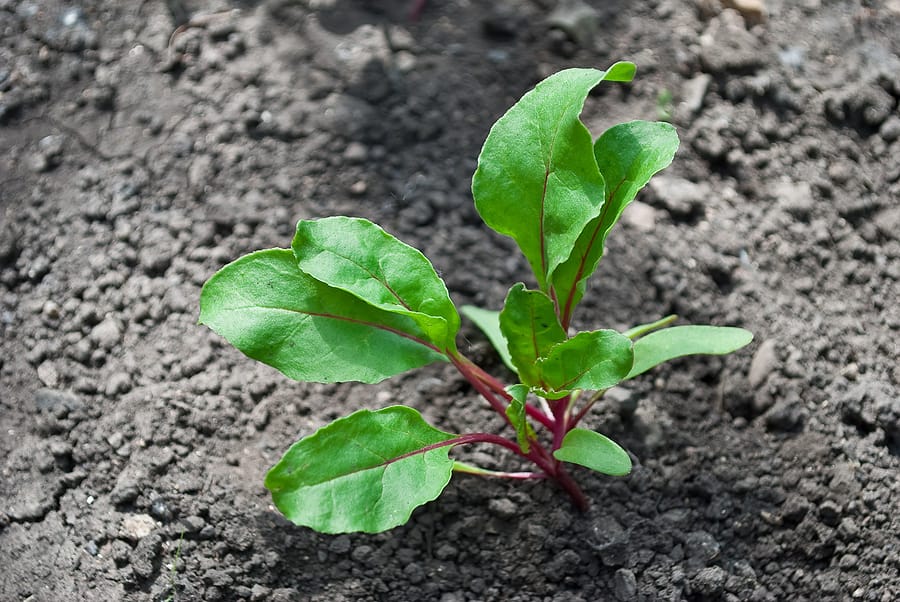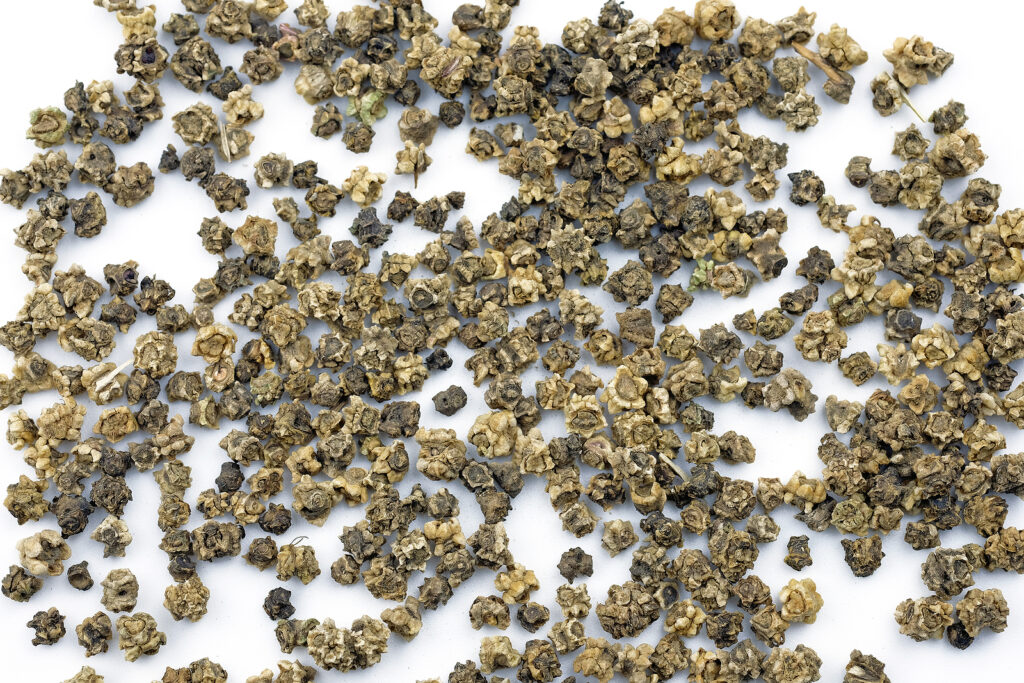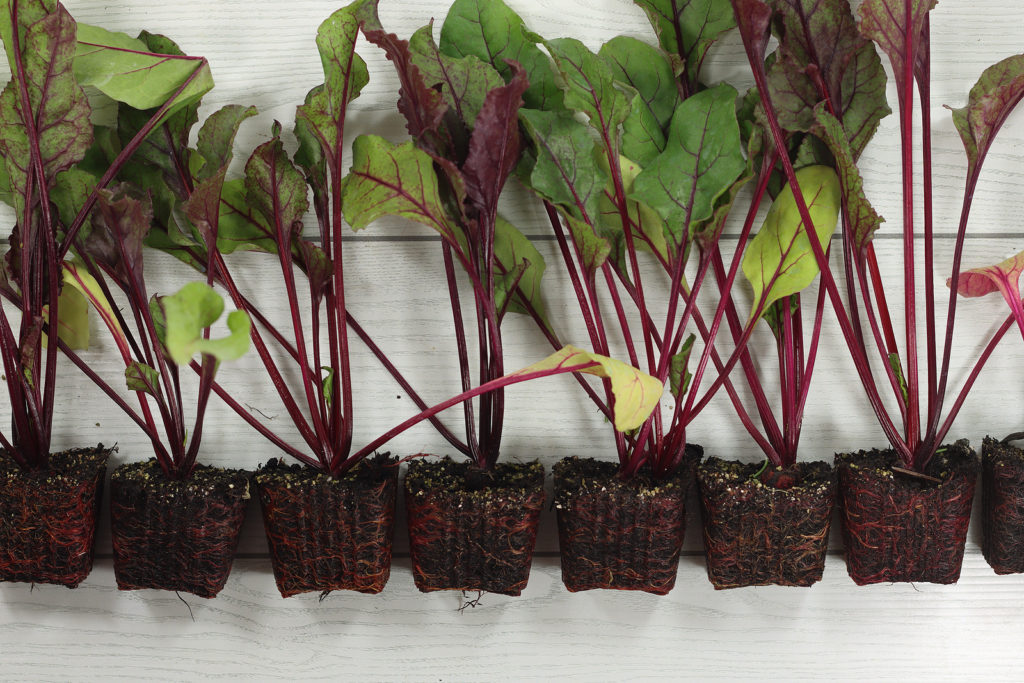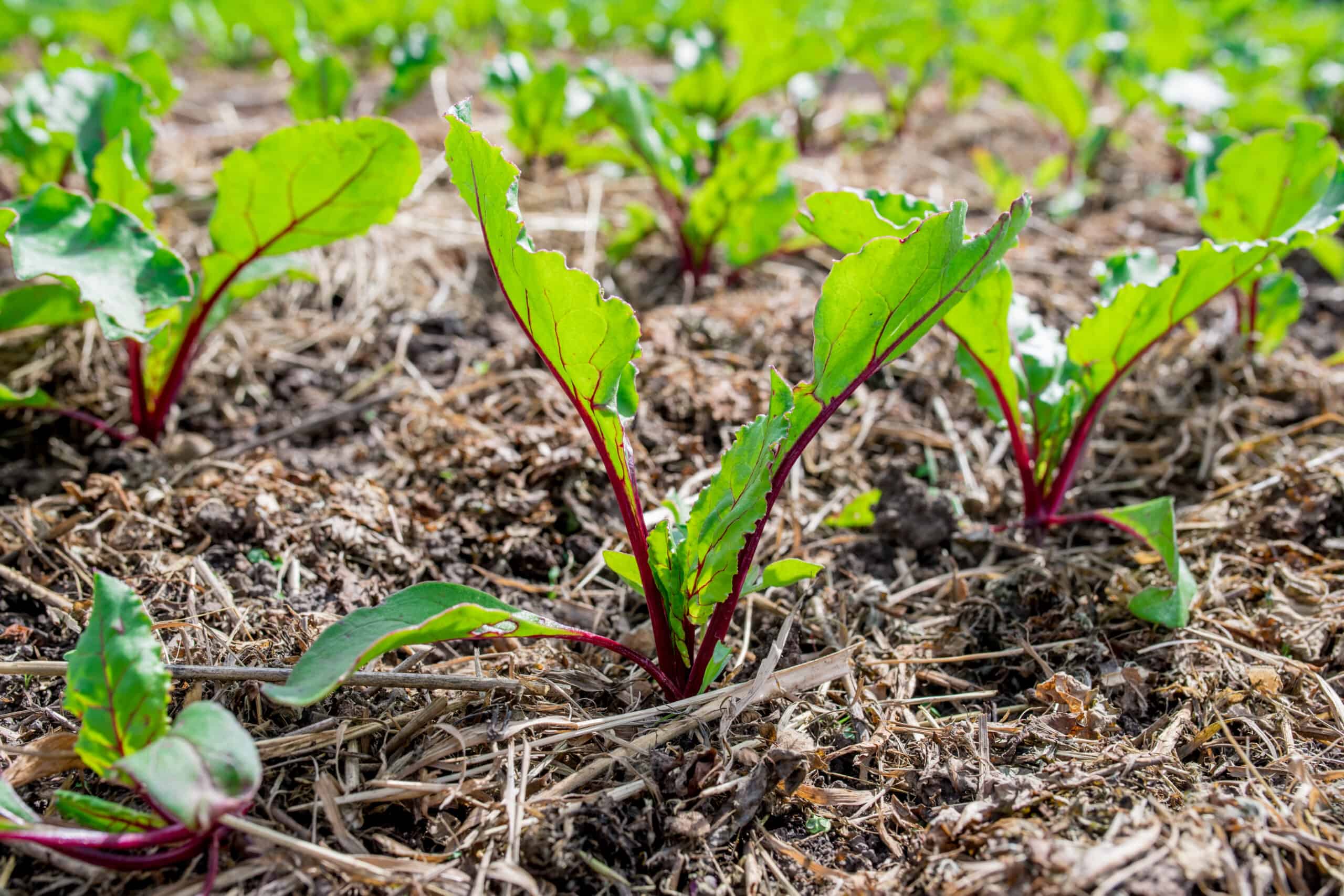Beets are commonly grown in spring, summer, and autumn.
Beets may be seeded as early in spring as the ground can be worked. Make successive sowings at intervals of about 3 weeks in order to have a continuous supply of young, tender beets throughout the season.
Beets are well adapted to grow in many regions. Beets are fairly tolerant of heat and also resistant to cold. But beets will not withstand severe freezing weather.
Good beet quality depends on quick growth. Plant beets in humus-rich, well-drained soil. Apply lime to strongly acidic soils if a soil test shows the need.
Midsummer heat and drought can interfere with seed germination. If sowing seeds in midsummer, keep the soil damp until the plants are up.
Good Products for Growing Beets at Amazon:
- Garden Safe Snail and Slug Bait
- Bonide Sulfur Fungicide
- Monterey BT Caterpillar Killer
- Neem Bliss 100-% Cold Pressed Neem Oil
- Safer Brand Insect Killing Soap
- PyGanic Botanical Insecticide

Beet seed consists of small balls, each containing several seeds. Cover seeds to a depth of about an inch.
After plants are well-established, thin them to stand 2 to 3 inches (5-8cm) apart.
Plant beet seeds in the cool time of the year; they are best grown in spring and fall.
Grow beets for their sweet roots or earthy-flavored greens. Beets are most flavorful and colorful when grown in cool soil.
- Beets can be directly sown in the garden 4 weeks before the last frost in spring.
- Beets sown in late summer can be harvested in fall and winter if they are protected from severe freezing by a layer of straw or leaves or covered by a plastic tunnel.
- Grow beets and other root crops in light-textured soil free of pebbles and stones. This will ensure roots do not split or become malformed.
Beetroots can be red, yellow, white, or striped. Some varieties have bright red leaf veins.
Beets mature in 45 to 60 days depending on the variety.
Beets planting details
- Sowing depth: ½ – 1 inch (1.25-2.5cm)
- Space between plant after thinning: 2-4 inches (5-10cm)
- Days to sprout: 10
- Days to harvest: 55-65
- Storage period: 2-3 weeks
- Seeds for 100-row feet: 1 ounce (29 grams)
- Yield per 100-row feet: 100 pounds (45 kilos)
- Suggested Varieties: Early: Little Egypt, Crosby, Egyptian, Early Wonder. Maincrop: King Red, Ruby Queen, Detroit Dark Red
- Notes: Use thinned plants for greens

Beets sowing and planting tips
- Start beets from seed or transplants.
- Seeds are viable for 4 years.
- Start seeds in the garden about 4 weeks before you expect the last frost. Beets can be started indoors, but they—like most root crops—are difficult to transplant to the garden with success.
- If started indoors and transplanted, allow two additional weeks to maturity as a result of root insult at transplanting; nip off the long thread tip of the beetroot when transplanting.
- Sow seed in shallow trenches ½ (8 mm) inch deep and be sure to heel or stamp the soil firmly in; beets often fail to germinate when there is insufficient contact with the soil.
- Sow seed 2 inches apart and later thin to 4 inches (5-10 cm) apart for large storage beets, closer if growing for baby beets or greens.
- Beet seeds are actually an aggregate of seeds—a seed ball of 2 or 3 individual seeds; if germination is complete, the seedlings will have to be thinned.
- Space rows 12 inches (30 cm) apart.
- Pre-soaking the seed in water before sowing can aid germination; soaking loosens the seed coat which contains a germination-inhibiting chemical.
- To improve germination sow seed at dusk or on a cool, cloudy day.
- Sow seed in loose, fertile soil. Adding aged compost to planting beds in advance of sowing will feed the soil and aid moisture retention.
- The seeds should germinate in 5 to 8 days at an optimal temperature of 77°F (25°C) or thereabouts.
- Make additional sowing at 3-week intervals for a continuous harvest, but time sowing so that the crop does not mature in hot weather.
- Beets grow best when daytime temperatures are in the 60s°F (mid-teens Celsius).
- Beets prefer a soil pH range of at least 6.0 but not greater than 7.5.
- Grow beets in full sun for best yield—tolerate partial shade.
- Avoid planting beets where spinach of Swiss chard has grown recently.
- Fertilize with an organic fertilizer such as fish emulsion at half strength.
- Common pest enemies are aphids and flea beetles. Protect the seedlings from pests and cold for two to three weeks after planting covering them with a cloche or plastic tunnel or cold frame.
Beets growing tips
- Place. Beets will grow in full sun or light shade.
- Soil to grow beets. Beets prefer well-worked, loose soil that is rich in organic matter. Remove from the planting bed stones and dirt clods or roots that might cause beetroots to become malformed. Work compost into the soil at planting time. Beets prefer alkaline soil over acidic soil, pH of 6.5 to 7.5.
- Spacing beets. Sow beet seeds ½ to 1 inch deep in rows 12 to 18 inches apart. In wide beds or intensive plantings, thin beet seedlings to 3 to 4 inches apart. Beet seeds come in clusters. Each cluster is smaller than a pea seed and can produce several seedlings. Seeds generally germinate in 4 to 10 days. The seedlings may not emerge at the same time. Thin seedlings when the plants are a few inches tall and have developed their first true leaves. Seedlings do not transplant well. Thinned seedlings can be added to salads.
- Interplanting: Grow beets with bush beans cabbage family crops, corn, leek, lettuce, and radish.
- Container growing beets. Beetroots grow close to the soil surface so they can be grown in containers. Allow 3 to 4 inches between plants. Sow beets in a container at 8 inches deep. In a round container, sow the seeds in concentric circles.
- Watering beets. Keep the soil around beets moist; do not allow the soil to dry out. Mulch will help keep the soil moist. In hot weather, beetroots can become woody. A lack of moisture will leave beets stringy and tough.
- Feeding beets. Work compost into the soil before planting beets and side-dress beets with compost at mid-season.
Beets planting calendar
Planting for spring and summer harvest
Sow beet seeds as soon as the soil can be worked in spring, 2 to 3 weeks before the last frost. Beets will germinate in the soil as cool as 45ºF (7ºC) but will grow best in soil temperature of about 50ºF (10ºC). For successive crops, plant beets every 10 days. Young beet plants can tolerate frost but they will go to seed without making roots if the weather is too cold.
- 6-8 weeks before the last frost in spring: direct-sow in a plastic tunnel or cold frame.
- 2-4 weeks before the last frost in spring: direct-sow in the garden.
- Direct-sow succession crops every 2 weeks or so after the last frost.
Planting for fall and winter harvest
Beets can be planted in late summer for an autumn or winter crop. Depending upon the variety allow 50 to 90 days for beets to mature before the first freeze. (Look on the seed packet for days to maturity and then count backward from the estimated first frost date in your area.) Where there is no freeze, plant beets in winter. Once autumn beets have matured, they can be left in the ground for winter harvest as long as the ground does not freeze. Beets can be grown in a cold frame or protected by a plastic tunnel.
- 8-10 weeks before the first frost in fall: direct-sow fall crop in the garden (planting beds can be covered later with straw or leaves for winter harvest).
- 6-8 weeks before the first frost in fall: direct-sow in a plastic tunnel or cold frame for late fall and winter harvest.

Planting dates for spring and summer harvest*
| Average date of last frost/ | Planting dates |
| Jan. 30 | Jan. 1- Mar. 15 |
| Feb. 8 | Jan. 10-Mar. 15 |
| Feb. 18 | Jan. 20-Apr. 1 |
| Feb. 28 | Feb. 1-Apr. 15 |
| Mar. 10 | Feb. 15-June 1 |
| Mar. 20 | Feb. 15-June 1 |
| Mar. 30 | Mar. 1-June 1 |
| Apr. 10 | Mar. 10-June 1 |
| Apr. 20 | Mar. 20-June 1 |
| Apr. 30 | Apr. 1-June 15 |
| May 10 | Apr. 15-June 15 |
| May 20 | Apr. 25-June 15 |
| May 30 | May 1-June 15 |
| June 10 | May 15-June 15 |

Recommended beet varieties
- ‘Bull’s Blood’ is sweet and dark red, and its leaves are tasty in salads.
- ‘Burpee’s Golden’ (55 days)
- ‘Chioggia’ is sweet and striped red and white on the inside.
- ‘Cylindra’ is also called ‘Formanova’ or ‘Tendersweet’ (60 days).
- ‘Detroit Dark Red’ is an old-time favorite.
- ‘Early Wonder’ ‘(53 days)
- ‘Forono’ is cylindrical and 2 inches in diameter.
- ‘Golden’ has yellow flesh.
- ‘Little Ball’ (56 days)
- ‘Long Season’ also called ‘Winter Keeper’ (80 days)
- ‘Red Ace’ adapts well to diverse soil and weather conditions.
- ‘Ruby Queen’ (56 days)
- ‘Winter Keeper’ (80 days)
Botanical Name: Beta vulgaris. Beets belong to the Chenopodiaceae family, other family members include spinach, Swiss chard, quinoa, and sugar beets.
Beets articles at Harvest to Table:
How to Harvest and Store Beets
Beets and Swiss Chard Growing Problems: Troubleshooting
Seven Ways to Cook and Serve Beets
Baby Beets, Baby Carrots, and Sugar Snap Peas Salad
Baby Beets: Steamed, Baked, Pickled
Garden Planning Books at Amazon:
- Tomato Grower’s Answer Book
- Vegetable Garden Almanac & Planner
- Kitchen Garden Grower’s Guide Vegetable Encyclopedia
- Vegetable Garden Grower’s Guide















